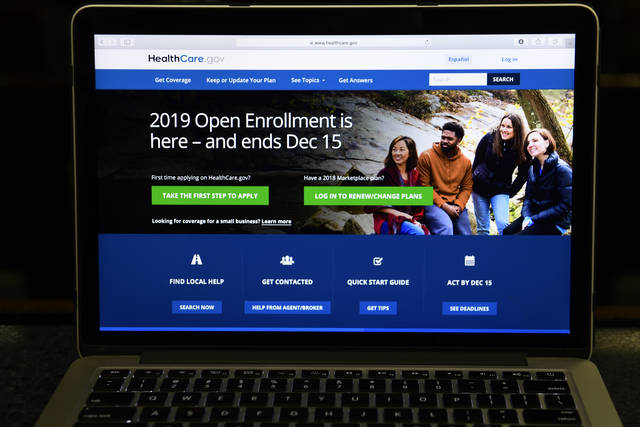WASHINGTON — The federal website where consumers can get health insurance under the Affordable Care Act was up and running Thursday after a slow start as sign-up season for 2019 opened days before the midterm elections.
During early morning hours, people accessing the site were directed to a screen that said work was underway. A recording at the HealthCare.gov call center conveyed a similar message. Things seemed to be running normally by about 9 a.m. EDT.
With health care a major issue in Tuesday’s elections, this sign-up season under the Trump administration is getting close scrutiny.
In earlier years, technical problems with the site created major headaches for the Obama administration. Some Democrats cited HealthCare.gov’s meltdown after its 2013 debut as one of the reasons they lost control of the Senate the following year.
Since those initial problems were fixed, the website serving people in 39 states has worked fairly smoothly, first under President Barack Obama and now under Donald Trump. The rest of the states and the District of Columbia run their own sign-ups.
A spokesperson for the Centers for Medicare and Medicaid Services said Thursday morning that HealthCare.gov was open for business.
Before the site went live for sign-ups at the start of a new coverage year, technicians had to load up details on thousands of changes in plans and premiums.
“Prior to every open enrollment, final preparations must take place ahead of the start of the open enrollment period to ensure the website runs smoothly for consumers,” said a statement from the agency. The statement said the agency’s commitment had been that the site would be ready “in the morning.”
The health law’s sixth sign-up season began with stabilizing premiums and more choice for consumers.
Nationally, average premiums are going up only by low single-digit percentages for 2019. In some states, and for some types of plans, premiums will decline. Fewer areas will see increases. Insurers also are expanding their participation.
But Republicans have not backed off their pledge to fully repeal the health law, despite failing to do so in Trump’s first year. Still, other changes by the GOP-run Congress and the administration for next year may result in fewer people signing up.
Congress did get rid of the unpopular requirement that most people carry health insurance or risk fines, starting Jan. 1. The administration has opened the way for insurers to offer alternatives to the law’s comprehensive coverage, including plans that don’t have to cover pre-existing conditions.
Democrats have made maintaining protections for pre-existing conditions a major issue in the elections, forcing Republicans on the defensive. They also accuse Trump of trying to “sabotage” the health law, and a core group of former Obama administration officials has kept close tabs on sign-up season.
Despite all the political drama, enrollment has remained remarkably stable.
About 10 million people have private policies through HealthCare.gov and state-run insurance markets, with roughly 9 in 10 getting taxpayer-financed help to pay their premiums. An estimated 12 million more are covered through the law’s Medicaid expansion, aimed at low-income adults.
Income-based subsidies that protect consumers from high premiums remain available for next year, as has been the case since the overhaul went into effect. Open enrollment ends Dec. 15 for coverage starting Jan. 1.


